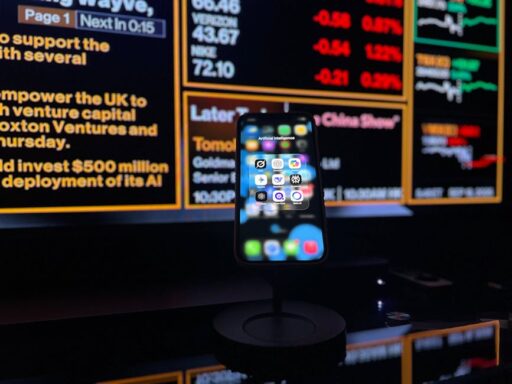Apple AI Strategy: How Siri, Partnerships, and M&A Shape the Road Ahead
Apple’s leadership has reiterated that the company remains actively engaged in expanding its AI capabilities through a combination of internal development, strategic partnerships, and selective acquisitions. With next-generation, AI-powered Siri slated for release in 2026, Apple is balancing on-device intelligence, cloud-based private compute, and integrations with third-party models to deliver personalized, privacy-first experiences.
What is Apple’s AI strategy and timeline for Siri?
Apple’s approach to AI emphasizes three complementary pillars: building proprietary foundation models, integrating third-party large language models where appropriate, and pursuing acquisitions when they align with product roadmaps. The company’s CEO confirmed the company is progressing toward a 2026 launch window for its next-generation Siri, reinforcing a timeline that centers on privacy, personalization, and seamless device integration.
Key components of Apple’s strategy include:
- On-device foundation models: Optimizing models to run efficiently on iPhone, iPad, and Mac hardware to enable low-latency, private inference.
- Private Cloud Compute: Augmenting device capabilities with dedicated cloud infrastructure for tasks that require larger models or aggregated compute while preserving user privacy.
- Strategic partnerships and selective M&A: Integrating best-in-class third-party technologies and acquiring specialized teams or IP to accelerate roadmap milestones.
Why a three-pronged approach?
This hybrid strategy allows Apple to leverage the strengths of each approach: control and privacy from in-house models, speed-to-market and specialized capabilities from partners, and targeted talent or technology acquisitions to fill gaps. The result is a balanced path toward delivering personalized AI experiences without compromising Apple’s core privacy promises.
How is Apple building private AI infrastructure?
Apple is investing in its Private Cloud Compute systems and manufacturing infrastructure to support hybrid workloads that span devices and cloud servers. That includes deploying servers designed for Apple Intelligence in its data centers and ramping manufacturing capacity to ensure performance and scale.
Two critical elements of this infrastructure strategy are:
- Device-first model deployment: Shipping optimized foundation models on devices to enable offline capabilities and reduce reliance on external networks for common tasks.
- Private cloud augmentation: Routing more complex or aggregated queries to Apple’s private cloud to preserve privacy while delivering the richness of larger models.
This design mirrors broader industry trends on AI deployment and infrastructure investment. For context on how companies are rethinking infrastructure to support large-scale AI, see our analysis of the broader race to build AI infrastructure and industry shifts.
Related reading: The Race to Build AI Infrastructure: Major Investments and Industry Shifts
What does this mean for model lifecycle and updates?
Apple’s model lifecycle will likely involve frequent updates to on-device models for responsiveness and privacy, while cloud models evolve to handle heavier workloads and cross-user improvements. This split enables Apple to maintain strong privacy protections for personal data while still improving model performance and feature breadth server-side.
Will Apple pursue acquisitions or rely on partners?
Apple explicitly remains open to acquisitions that meaningfully advance its roadmap. The company conducts ongoing market surveillance for M&A opportunities and evaluates potential deals through the lens of product acceleration and strategic fit. At the same time, Apple plans to integrate with third-party providers selectively, bringing outside innovations into its ecosystem where they enhance Siri and Apple Intelligence.
When does Apple choose M&A vs. partnership?
Apple tends to prefer partnerships for capabilities that can be integrated without disrupting its product architecture or privacy model. Acquisitions are more likely when Apple needs proprietary IP, specialized expertise, or a tighter integration than a partnership can provide. This pragmatic posture helps Apple remain nimble while preserving long-term control over critical technology stacks.
How does this strategy affect developers, consumers, and competition?
Apple’s emphasis on on-device intelligence and private cloud compute has broad implications:
- Developers: New APIs and tools will likely be introduced to let apps leverage local models and Apple Intelligence features while preserving user consent and data minimization.
- Consumers: Users can expect deeper personalization in Siri and system-level AI features, with Apple positioning privacy as a differentiator in device choice.
- Competition: Apple’s approach pressures rivals to balance model capabilities with privacy and infrastructure investment, leading to increased focus on specialized hardware, partnerships, and cloud orchestration.
For developers, this shift will emphasize optimization for Apple silicon and careful design for privacy-preserving model interactions. For consumers, it may tilt device purchase decisions toward ecosystems that deliver richer, private AI experiences.
How does Apple balance privacy with powerful AI?
Privacy is central to Apple’s messaging and engineering choices. By shipping models on-device and routing select queries to a private cloud under Apple’s control, the company can reduce the need to share raw user data with external providers. Apple also appears to be designing its systems to process sensitive information locally wherever possible.
Apple’s approach demonstrates a blend of technical architecture and policy: engineering choices that minimize data exposure, combined with product decisions that give users transparency and control.
How will Apple integrate third-party AI technologies?
Apple plans phased integrations with third-party models where they add clear value. These integrations will be evaluated against Apple’s privacy standards and product experience goals. Over time, Apple intends to expand its ecosystem of integrations to enrich Siri and Apple Intelligence while maintaining consistent user control over data and model behavior.
See our coverage of how major AI providers are evolving and how platform partnerships shape product features in our report on AI model developments.
Related reading: OpenAI Acquires Sky: Revolutionizing AI on Mac Platforms
How does Apple’s roadmap connect to long-term AI trends?
Apple’s moves reflect several long-term trends in AI:
- Model specialization: Using a mix of compact, efficient models for devices and larger models for cloud tasks.
- Privacy-first architecture: Designing systems that limit data exposure and favor local processing.
- Infrastructure investment: Building private compute and manufacturing capacity to scale AI capabilities.
Apple’s investments align with broader shifts in how AI systems are architected for consumer products, including advances in contextual memory, efficient inference, and hybrid compute workflows. For perspective on memory and context systems that enhance AI applications, read our piece on the next frontier of AI memory systems.
Related reading: AI Memory Systems: The Next Frontier for LLMs and Apps
Is Siri 2026 likely to change how people use their phones?
Yes. The next-generation Siri aims to be more conversational, contextually aware, and personalized — integrating across apps, data sources, and device sensors to anticipate user needs. By running more capabilities on-device and using private cloud augmentation for complex tasks, Apple seeks to deliver richer interactions without compromising privacy.
Potential user-facing changes
- More natural, multi-turn conversations that remember context across sessions.
- Faster responses for common tasks via on-device processing.
- Deeper integration with apps for proactive assistance and automated workflows.
As Apple continues to refine Siri and Apple Intelligence, these changes could influence how users prioritize AI features when choosing devices, making AI capabilities a growing factor in purchase decisions.
What should enterprises and developers watch for?
Enterprises and developers should monitor several signals:
- New developer APIs and SDKs enabling on-device model usage and private cloud hooks.
- Partnership announcements that open pathways to integrate third-party models under Apple’s privacy model.
- M&A activity that signals prioritized capabilities (e.g., speech, multimodal understanding, or specialized model compression techniques).
Staying informed will be essential for adapting app strategies to leverage Apple’s evolving AI platform while ensuring compliance with privacy and platform policies.
Conclusion: What to expect next
Apple’s AI trajectory emphasizes a pragmatic, privacy-centric path: ship effective on-device models, augment with private cloud compute for heavier workloads, and remain open to partnerships and targeted acquisitions that accelerate the roadmap. With Siri’s 2026 update as a visible milestone, expect steady infrastructure investment, new developer tools, and more integrations that extend Apple Intelligence across the ecosystem.
For organizations and developers, the window ahead will demand a focus on optimization for Apple silicon, attention to user privacy controls, and preparedness to adopt new APIs that blend device and cloud intelligence.
Want the latest AI insights from Artificial Intel News?
Sign up for our newsletter to get timely analysis of product updates, partnerships, and infrastructure moves shaping the future of AI. We’ll track Apple’s announcements closely and unpack what they mean for users, developers, and the broader industry.
Call to action: Subscribe now for weekly briefings and deep dives on Apple’s AI strategy and other major developments in the AI ecosystem.






